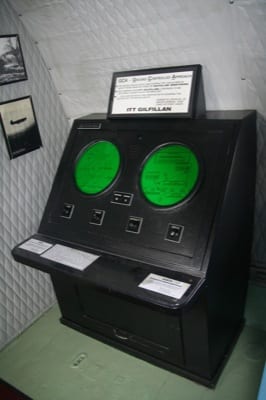 Before there was Global Positioning Systems, Wide Area Augmentation Systems and Instrument Landing Systems, pilots depended on Ground Control Approaches (GCA) to find their way to the runway in poor weather. The mobile GCA unit was developed during World War II by the Gilfillan Co. Before the war the company built radios, entering the aviation navigation market at the request of the Massachusetts Institute of Technology radiation laboratory, which was working extensively to develop landing systems for aircraft.
Before there was Global Positioning Systems, Wide Area Augmentation Systems and Instrument Landing Systems, pilots depended on Ground Control Approaches (GCA) to find their way to the runway in poor weather. The mobile GCA unit was developed during World War II by the Gilfillan Co. Before the war the company built radios, entering the aviation navigation market at the request of the Massachusetts Institute of Technology radiation laboratory, which was working extensively to develop landing systems for aircraft.
This GCA, which belongs to the Berlin Airlift Association, is one of the artifacts on the C-54 mobile museum. Thousands of people tour the museum during fly-ins around the country, including AirVenture in Oshkosh, which kicks off today. The airplane and its GCA were used to supply desperately needed food and medicine to the besieged city of Berlin during the airlift of 1948-49.
The GCA is labor intensive because for each airplane on approach, there is a single controller talking to the pilots. Instead of watching a needle deflect on a round gauge or an airplane flying along a pink line on a flat screen with written prompts stating when to turn, the pilot depended on the voice of the controller telling him to pitch up, go left, go right and when he was on glide-path. To see a GCA in use, rent “The Big Lift,” a movie about the Berlin Airlift that uses actual footage. The scenes of heavily loaded aircraft coming down through canyons made of buildings will have you on the edge of your seat. For more information: SpiritOfFreedom.org.
